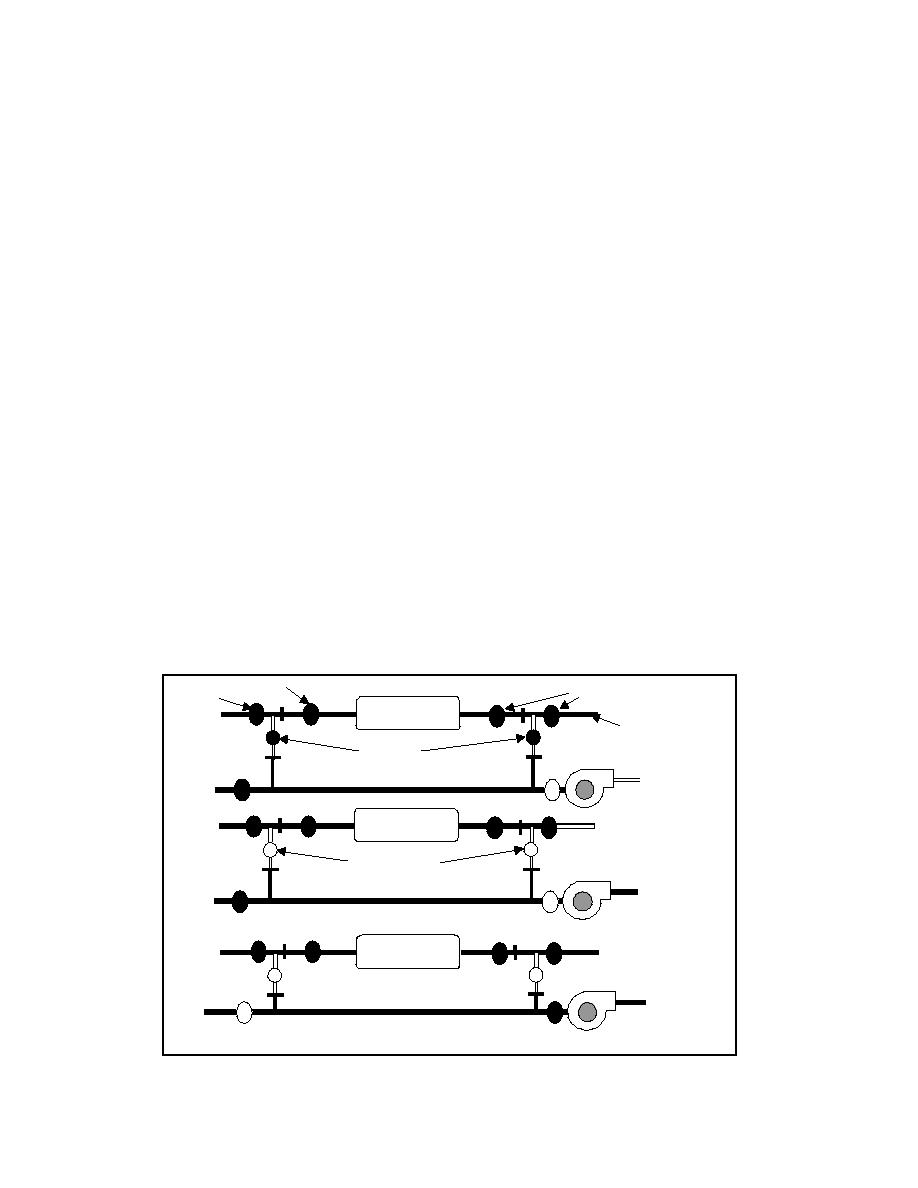 |
|||
|
|
|||
|
Page Title:
Tritium Apparatus, Isolation Valves, and Purge Ports |
|
||
| ||||||||||
|
|  DOE-HDBK-1129-99
If the port connection is leaking, the leak is repaired, and the leak test is rerun.
The first hand valve is opened and then closed to allow tritium from the container to enter the
void space between the two valves.
The second hand valve is opened and then closed to allow the trapped tritium to expand into
the port volume.
The outside of the port connection area can be sniffed with a tritium monitor. The containment
system tritium monitor may be observed for an increase in tritium concentration to detect a
tritium leak from the port connection into the containment volume.
If no leak is detected, then the two series valves may be opened, and the reconnection is
complete.
6.3.1 Tritium Apparatus, Isolation Valves, and Purge Ports
A "purge port" is a capped, sealed port connected through a valve to a potentially tritium-
contaminated volume. The purpose of a purge port is to provide a path, which can be used to
remove tritium-contaminated gases from the isolation volume prior to making a line break at the
component flanges to remove a component. If the tritium-contaminated gases are not removed
from the isolation volume, they will be released into the containment system when the flange is
unsealed. The released gases and outgassing from the isolation volume surfaces will contaminate
the containment volume gases. Following removal and replacement of a component, the port is
used to leak test the new component and flange seals prior to placing the component in service.
Figure 6-2 is an illustration of two purge ports installed to allow evacuation of the volume and leak
testing of the flanges between two sets of valves, thus allowing isolation and removal of a tritium-
contaminated component. Note that the purge ports are part of the permanently installed system,
and are not part of the component.
IsolationVal ves
IsolationVal ves
Component to be
Connected
removed/repaired
to the rest of
the T2
system
Purge Ports
Evacuate
port volume;
check for
leaks
Air
Component to be
purge
removed/repaired
val ve
Component flanges
Evacuate
isolation
val ve
volume
Component to be
removed/repaired
Backfill with
Purge
air; repeat
with
evacuate
air
backfill cycle
as
necessary
FIGURE 6-2. Purge ports and isolation valves
70
|
|
Privacy Statement - Press Release - Copyright Information. - Contact Us |